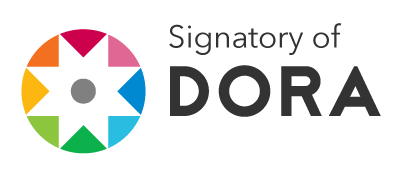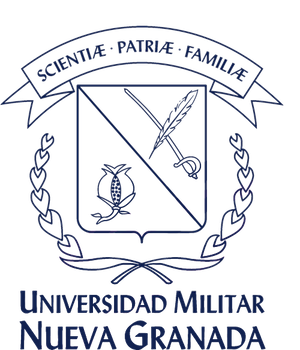Phenolics with Leishmanicidal and Immunomodulatory Properties
Resumen
La leishmanioisis permanece actualmente como un problema de salud pública que ha cobrado gran relevancia, sobre todo en países en vía de desarrollo, en cuya mayoría, la enfermedad es endémica. El incremento de reportes de fallo terapéutico por la aparición de cepas resistentes así como la severidad de los efectos adversos conocidos para los tratamientos actuales, han hecho imperativa la búsqueda de nuevos agentes antileishmaniales. En ésta búsqueda se ha establecido que, adicional al efecto parasitocida, un potencial inmunomodulador podría contribuir significativamente en la terapéutica contra leishmaniosis. Una observación importante, a través de los resultados relacionados con compuestos que poseen efecto inmunomodulador, es la actividad parasitocida selectiva contra la forma amastigote internalizada en macrófagos, ya que la acción contra promastigotes es prácticamente nula. No obstante, en la literatura se encuentran muy pocos ejemplos de este tipo de acciones aunque son muy interesantes. Por lo tanto, el presente trabajo muestra una revisión acerca de compuestos fenólicos con potencial antileishmanial, cuyo mecanismo sugerido es la inmunomodulación.
Descargas
Lenguajes:
enReferencias bibliográficas
Arevalo I., Ward B., Miller R., Meng T.C., Najar E., Alvarez E., Matlashewski G. and Llanos- Cuentas A. 2001. Successful treatment of drug-resistant cutaneous leishmaniasis in humans by use of imiquimod, an immunomodulator. Clinical Infectious Disease, 33:1847-1851.
Assimina Z., Charilaos K. and Fotoula B. 2008. Leishmaniasis: an overlooked public health concern. Health Science Journal, 2:196-205.
Aste-Amezaga M., Ma X., Sartori A. and Trinchieri G. 1998. Molecular mechanisms of the induction of IL-12 and its inhibition by IL-10. Journal of Immunology, 160:5936-5944.
Cabanillas B.J., Le Lamer A.C., Olagnier D., Castillo D., Arevalo J., Valadeau C., Coste A., Pipy B., Bourdy G., Sauvain M. and Fabre N. 2014. Leishmanicidal compounds and potent PPARγ activators from Renealmia thyrsoidea (Ruiz & Pav.) Poepp. & Endl. Journal of Ethnopharmacology, 57, 18:149–155.
Chan M.M., Adapala N. and Chen C. 2012. Peroxisome Proliferator-Activated Receptor- γ -mediated polarization of macrophages in Leishmania Infection. PPAR Research, 2012:1-11.
Checker R., Chatterjee S., Sharma D., Gupta S., Variyar P., Sharma A. and Poduval T.B. 2008. Immunomodulatory and radioprotective effects of lignans derived from fresh nutmeg mace (Myristica fragrans) in mammalian splenocytes. International Immunopharmacology, 8:661-669.
Chowdhury S., Mukherjee T., Mukhopadhyay R., Mukherjee B., Sengupta S., Chattopadhyay S., Jaisankar P., Roy S. and Majumder H.K. 2012 The lignan niranthin poisons Leishmania donovani topoisomerase IB and favours a Th1 immune response in mice. EMBO Molecular Medicine, 4:1126-1143.
Croft SL, Sundar S and Fairlamb AH. 2006. Drug resistance in leishmaniasis. Clinical Microbiology Reviews, 19:111-126.
D’Andrea A., Aste-Amezaga M., Valiante N.M., Ma X., Kubin M. and Trinchieri G. 1993. Interleukin 10 (IL-10) inhibits human lymphocyte interferon gamma-production by suppressing natural killer cell stimulatory factor/ IL-12 synthesis in accessory cells. Journal of Experimental Medicine, 178:1041-1048.
Ercil D., Kaloga M., Radtke O.A., Sakar M.K., Kiderlen A.F. and Kolodziej H. 2005. O-galloyl flavonoids from Geranium pyrenaicum and their in vitro antileishmanial activity. Turkish Journal of Chemistry, 29:437-443.
Faleiro R.J., Kumar R., Hafner L.M. and Engwerda C.R. 2014. Immune regulation during
Chronic Visceral Leishmaniasis. PLoS Neglected Tropical Diseases, 8:e2914.
Galès A., Conduché A., Bernad J., Lefèvre L., Olagnier D., Béraud M., Martin-Blondel G., Linas M.D., Auwerx J., Coste A. and Pipy B. 2010. PPARγ controls Dectin-1 expression required for host antifungal defense against Candida albicans. PLoS Pathogens, 6, e1000714.
Gómez Romero S.E. 2012. Informe Epidemiológico del Evento Leishmaniasis, Año 2011. Instituto Nacional de Salud: Bogotá.
Gutiérrez Dueñas, P. 2010. Comportamiento Epidemiológico de la Leishmaniasis en Colombia. Informe Año 2009 Ajustado. Instituto Nacional de Salud: Bogotá.
Gutiérrez Dueñas, P. 2011. Informe Final del Evento de Leishmaniasis, año 2010. Instituto Nacional de Salud: Bogotá.
Ji J., Sun J. and Soong L. 2003. Impaired expression of inflammatory cytokines and chemokines at early stages of infection with Leishmania amazonensis. Infection and Immunity, 71:4278–4288.
Kassai T. 2006. The impact on database searching arising from inconsistency in the nomenclature of parasitic diseases. Veterinary Parasitology, 138:358-61.
Kayser O. and Abreu P.M. 2001. Antileishmania and Immunostimulating Activities of Two Dimeric Proanthocyanidins From Khaya senegalensis. Pharmaceutical Biology, 39:284-288.
Kayser O., Kolodziej H. and Kiderlen A.F. 2001. Immunomodulatory principles of Pelargonium sidoides. Phytotherapy Research, 15:122-126.
Kiderlen A.F., Kayser O., Ferreira D., Kolodziej H. 2001. Tannins and related compounds: killing of amastigotes of Leishmania donovani and release of nitric oxide and tumour necrosis factor alpha in macrophages in vitro. Zeitschrift für Naturforschung C, 56:444-454.
King R.J., Campbell-Lendrum D.H., and Davies C.R. 2004. Predicting geographic variation in cutaneous leishmaniasis, Colombia. Emerging Infectious Disease, 10:598-607.
Kolodziej H. and Kiderlen A.F. 2005. Antileishmanial activity and immune modulatory effects of tannins and related compounds on Leishmania parasitised RAW 264.7 cells. Phytochemistry, 66:2056-2071.
Kolodziej H., Kayser O., Kiderlen A.F., Ito H., Hatano T., Yoshida T., Foo L.Y. 2001. Antileishmanial activity of hydrolyzable tannins and their modulatory effects on nitric oxide and tumour necrosis factor-alpha
release in macrophages in vitro. Planta Medica, 67:825-832.
Maurer-Cecchini A., Decuypere S., Chappuis F., Alexandrenne C., De Doncker S., Boelaert M., Dujardin J.C., Loutan L., Dayer J.M., Tulliano G., Arevalo J., Llanos-Cuentas A. and Chizzolini C. 2009. Immunological determinants of clinical outcome in Peruvian patients with tegumentary leishmaniasis treated with pentavalent antimonials. Infection and Immunity, 77:2022-2029.
Mohapatra S. 2014. Drug resistance in leishmaniasis: Newer developments. Tropical Parasitology, 4:4-9
Monzote L. 2009. Current treatment of Leishmaniasis: a review. The Open Antimicrobial Agents Journal, 1, 9-19.
Myler P.J. and N. Fasel. 2008. Leishmania: after the genome. Wymondham: Caister Academic. xiv, Pag 306.
Nahrevanian H. 2006. Immune effector mechanisms of the nitric oxide pathway in malaria: cytotoxicity versus cytoprotection. Brazilian Journal of Infectious Diseases, 10:283-292.
Néris P.L., Caldas J.P., Rodrigues Y.K., Amorim F.M., Leite J.A., Rodrigues-Mascarenhas S., Barbosa-Filho J.M., Rodrigues L.C. and Oliveira M.R. 2013. Neolignan Licarin A presents effect against Leishmania (Leishmania) major associated with immunomodulation in vitro. Experimental Parasitology, 135:307-313.
Pan American Health Organization (PAHO), Health in the Americas. 2007. Scientific and technical publication (Washington, D.C.). 2007, Washington, D.C.: Pan American Health Organization, Pan American Sanitary Bureau, Regional Office of the World Health Organization. 2 v.
Pérez-Victoria F.J., Sánchez-Cañete M.P., Seifert K., Croft S.L., Sundar S., Castanys S. and Gamarro F. 2006. Mechanisms of experimental resistance of Leishmania to miltefosine: Implications for clinical use. Drug Resistance Updates, 9:26-39.
Radtke O.A., Foo L.Y., Lu Y., Kiderlen A.F. and Kolodziej H. 2003. Evaluation of sage phenolics for their antileishmanial activity and modulatory effects on interleukin-6, interferon and tumour necrosis factor-alpha-release in RAW 264.7 cells. Zeitschrift für Naturforschung C. 58:395-400.
Reithinger R and Coleman P.G. 2007. Treating cutaneous leishmaniasis patients in Kabul, Afghanistan: cost-effectiveness of an operational program in a complex emergency setting. BMC Infectious Diseases, 7:3.
Ribeiro-Gomes F.L., Otero A.C., Gomes N.A., Moniz-De-Souza M.C., Cysne-Finkelstein L., Arnholdt A.C., Calich V.L., Coutinho S.G., Lopes M.F. and DosReis G.A. 2009. Macrophage interactions with neutrophils regulate Leishmania major infection. Journal of Immunology, 172:4454-4462.
Robledo S.M., Puerta J.A., Muñoz D.L., Guardo M. and Vélez I.D. 2006. Efficacy and tolerance of pentamidine for treatment of cutaneous leishmaniasis caused by por L. (V) panamensis in Colombia. Biomedica, 26 Suppl 1:188-93.
Rodrigues M.L.O., Costa R.S., Souza C.S., Foss N.T. and Roselino A.M.F. 1999. Nephrotoxicity attributed to meglumine antimoniate (Glucantime) in the treatment of generalized cutaneous leishmaniasis. Revista do Instituto de Medicina Tropical de São Paulo, 41:33-37.
Rodríguez-Barraquer I., Góngora R., Prager M., Pacheco R., Montero L.M., Navas A., Ferro C., Miranda M.C. and Saravia N.G. 2008. Etiologic agent of an epidemic of cutaneous leishmaniasis in Tolima, Colombia. American Journal of Tropical Medicine and Hygiene, 78:276-82.
Rojas R., Valderrama L., Valderrama M., Varona M.X., Ouellette M. and Saravia N.G. 2006. Resistance to antimony and treatment failure in human Leishmania (Viannia) infection. Journal of Infectious Disease, 193:1375-1383.
Saravia N.G., Segura I., Holguin A.F., Santrich C., Valderrama L. and Ocampo C. 1998. Epidemiologic, genetic, and clinical associations among phenotypically distinct populations of Leishmania (Viannia) in Colombia. American Journal of Tropical Medicine and Hygiene, 59: 86-94.
Saravia N.G., Weigle K., Navas C., Segura I., Valderrama L., Valencia A.Z., Escorcia B. and McMahon-Pratt D. 2002. Heterogeneity, geographic distribution, and pathogenicity of serodemes of Leishmania viannia in Colombia. American Journal of Tropical Medicine and Hygiene, 66:738-44.
Sharma U. and Singh S. 2009. Immunobiology of leishmaniasis. Indian Journal of Experimental Biology. 47:412-423.
Singh O.P. and Sundar S. 2014. Immunotherapy and targeted therapies in treatment of visceral leishmaniasis: current status and future prospects. Frontiers in Immunology, 5:296, 1-9.
Sülsen V.P., Cazorla S.I., Frank F.M., Redko F.C., Anesini C.A., Coussio J.D., Malchiodi E.L., Martino V.S. and Muschietti L.V. 2007. Trypanocidal and leishmanicidal activities of flavonoids from Argentine medicinal plants.
American Journal of Tropical Medicine and Hygiene, 77:654-659.
Sundar S., Rosenkaimer F., Lesser M.L. and Murray H.W. 1995. Immunochemotherapy for a systemic intracellular infection: accelerated response using interferon-gamma in visceral leishmaniasis. Journal of Infectious Disease, 171:992-996.
Tasdemir D., Kaiser M., Brun R., Yardley V., Schmidt T.J., Tosun F. and Rüedi P. 2006. Antitrypanosomal and antileishmanial activities of flavonoids and their analogues: in vitro, in vivo, structure-activity relationship, and quantitative structure-activity relationship studies. Antimicrobial Agents and Che-motherapy, 50:1352-1364.
Velez I.D. 1995. ¿Leishmaniosis o Leishmaniasis?. Iatreia, 8:124-126.
Wong I.L., Chan K.F., Chen Y.F., Lun Z.R., Chan T.H. and Chow L.M. 2014. In vitro and in vivo efficacy of novel flavonoid dimers against cutaneous leishmaniasis. Antimicrobial Agents and Chemotherapy, 58:3379-3388.
World Health Organization (WHO). Executive Board. Session, Control of leishmaniasis : report by the Secretariat. 2006, Geneva: World Health Organization. Pag 7.
World Health Organization (WHO). Leishmaniasis: the global trend. Neglected tropical diseases 2009 30-01-2009 10-03-2010]; Available from: http://www.who.int/neglected_ diseases/integrated_media_leishmaniasis/ en/index.html.
Zhu X.X., Li Y.J., Yang L., Zhang D., Chen Y., Kmonickova E., Weng X.G., Yang Q. and Zídek Z. 2013. Divergent immunomodulatory effects of extracts and phenolic compounds from the fern Osmunda japonica Thunb. Chinese Journal of Integrative Medicine, 19:761-770.












